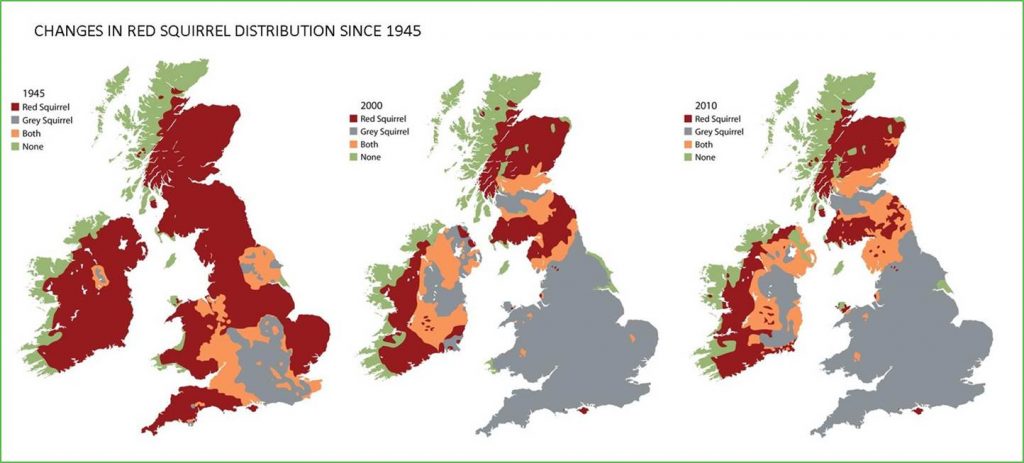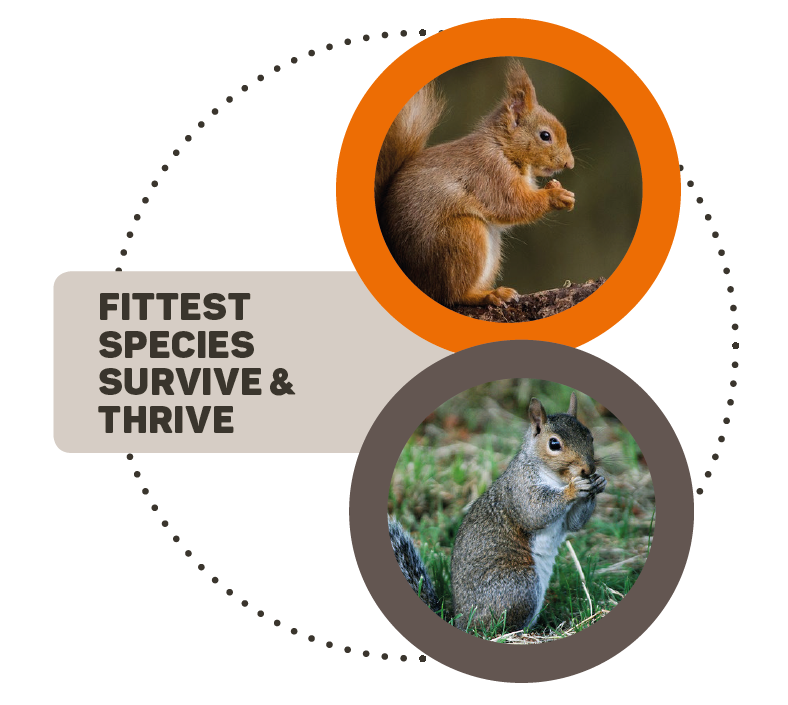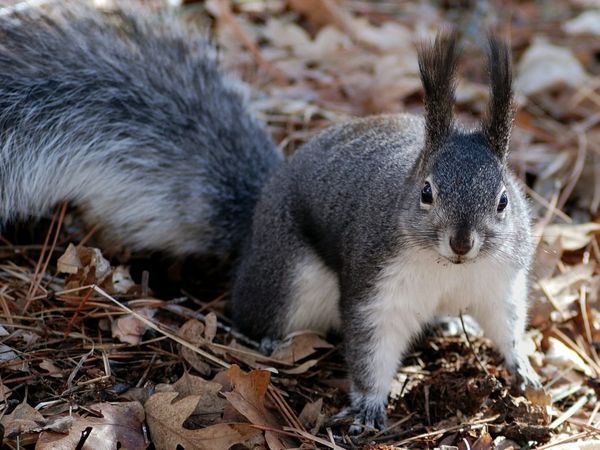Grey squirrel invasion. Lesson 1 in the Kanban Coach’s Evolutionary Change Playbook
Survival of the fittest: incremental social change and the parable of the grey squirrel’s arrival in the British Isles
We do not know the day when these fluffy aliens arrived in the UK. Wise people tracked them back to the 1870s, but the natives did not notice the danger for a while. When the invasive presence of them became a fact in 1876, it was way too late. A huge population of 3,5 million autochthons declined to 140 thousand today and is close to extinction. On the other hand, the invaders numbers have risen to 2,5 million.
You have probably recognized this story already. Of course, the villain role is played by Eastern gray squirrel (better known as “grey squirrel”), originated in North America and the victim is the red squirrel, native to Europe. We don´t know exactly, why grey squirrels were introduced into the United Kingdom, it largely appears to have been for vanity reasons, amongst the landed gentry, but since it happened, the number of red squirrels has been in steady decline.
The map below shows red and grey squirrels’ distribution in 1945, 2000 and 2010. Red squirrels have retreated to the mountains where they appear to do better, and grey squirrels don´t do so well.

But what makes grey squirrels so dangerous so that they have been named an invasive species and pest? Do they do anything to the red squirrels? No, not at all. There is no evidence of aggression between the two species. Grey squirrels just are. But they “are” in a very special way: they are fitter for the environment, they are more fit-for-purpose (which in this case, is the purpose of being a squirrel, surviving and thriving).
Grey squirrels:
- Are larger and capable to store up to four times more fat, thus better able to survive winter conditions
- Compete more successfully for food and habitat
- Can produce more young
- Do not need large numbers to start a new population
- Live in higher densities and are less vulnerable to habitat destruction or fragmentation
- Store nuts in multiple caches, rather than relying on a single cache that might be robbed or destroyed
- Force red squirrels to move into less suitable areas, which do not help the red ones to survive
- Can carry squirrel pox virus, which is fatal to red squirrels (but does not harm grey ones)
Recent research has shown us two things: red squirrels suffer from stress when greys enter their habitat. The stress weakens their resistance to squirrel pox virus. Consequently, reds retreat away from areas populated with greys. The retreat to margins – the mountains in the north and west of the British Isles. It turns out that in the mountains, the reds have an advantage – a predator called the pine marten. The red squirrel has lived with the pine marten for tens of thousands of years. Reds can smell them coming and are adapted to survive in a habitat filled with pine martens. The grey, on the other hand, a recent arrival from North America, has not encountered the pine marten, and is not adapted to the danger. Consequently, pine martens kill grey squirrels in the mountains. What appears to be emerging in the British Isles is a new equilibrium where red squirrels, albeit with depreciated numbers, can live happily in mountain areas, co-existing with pine martens, while grey squirrels have come to dominate the urban and suburban landscape.

Although grey squirrels are an antagonist in this story, they teach us an important lesson about our approach to change – evolutionary change. Implementing Kanban, we should treat the organization as habitat to slowly and patiently take over, allowing current structures, traditions, policies to coexist. You introduce metaphorically, different species, representing different ways of working, and you leave the old way of working alone. If the new ways are better adapted to the environment then they will be selected: they will survive and thrive, and the old ways will decline, and retreat to marginal areas where they may still be superior.
Start with what you do now, and you will see that Kanban:
- Is larger and capable of covering and improving more of your organizational structures than any other method
- Successfully competes with any existing environmental factors
- Can produce more value
- Does not require either a huge initiative to start, nor hundreds of people to be engaged
- Delivers sustainable effects, hence makes your organization less vulnerable to external circumstances
- Uses a service-oriented approach, where you ¨kanbanize¨ each node in your interdependent network of services, independently. You don´t rely on a grand design, or a single framework that may prove to be brittle, fragile, or easily criticized
- Unnoticeably moves existing practices away to marginal areas, where they may prove to be effective and valuable, or will eventually be forgotten
- Carries a positive change virus that is fatal to ineffective process management methods
Using the grey squirrel approach to introducing change helps you to take your organization through the whole process in the most harmless way, that we see possible. It protects people and supports improvements. Bruce Lee, via a blogger called Joe Campbell, taught us that ¨Kanban should be like water¨ – water flows around the rock, the rock of human resistance to change. We use “red squirrel, grey squirrel” strategy as one means to go around the rock of human resistance to change.
If you like this lesson and would like to know more about the Kanban Coaching approach to evolutionary change, then we teach this as part of the Kanban Coaching Practices class. Check our listing for forthcoming classes.
References:
- https://researchbriefings.files.parliament.uk/documents/CDP-2019-0174/CDP-2019-0174.pdf
- https://aphascience.blog.gov.uk/2018/10/09/red-squirrel/
- https://www.redsquirrelsunited.org.uk





